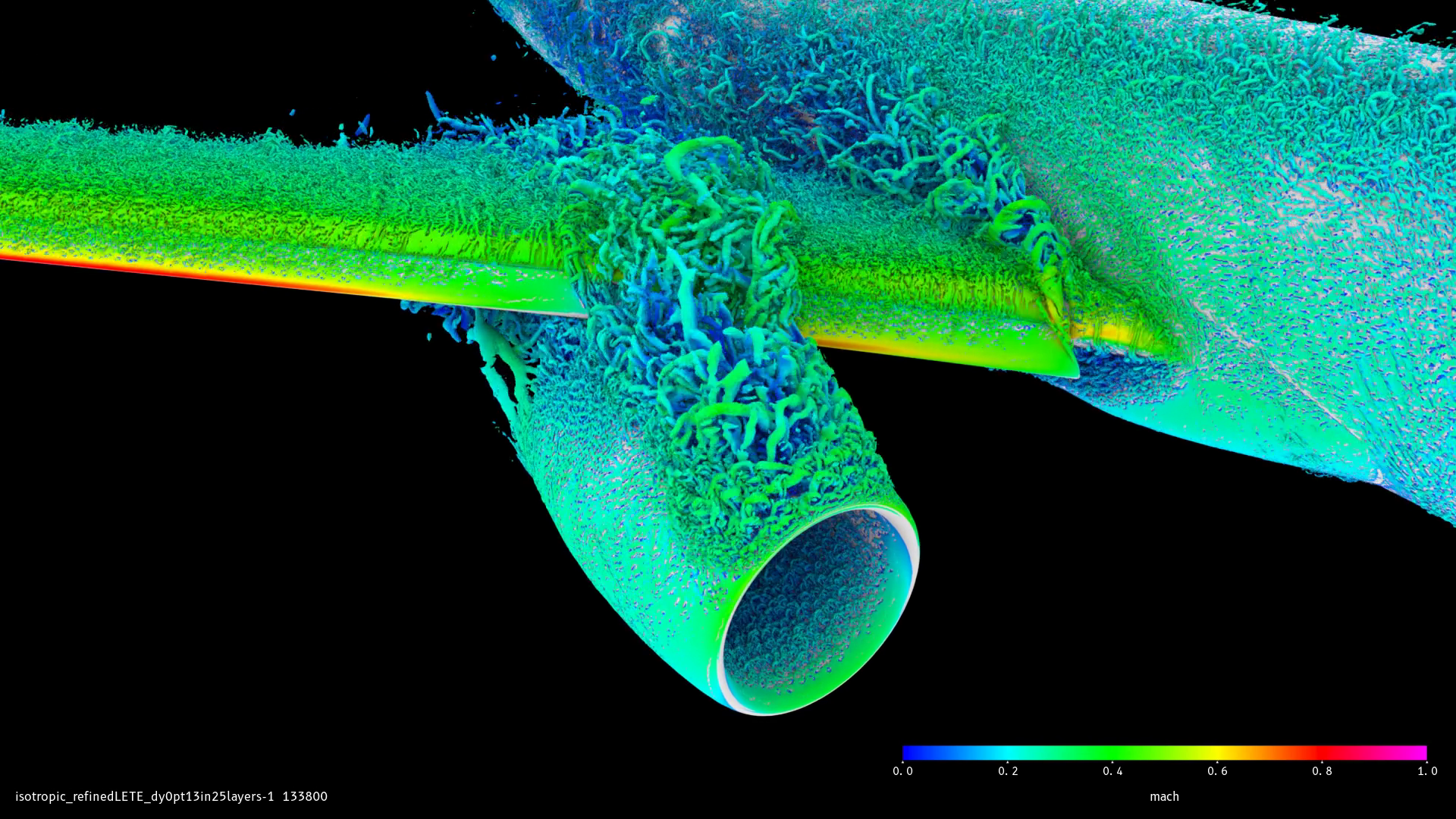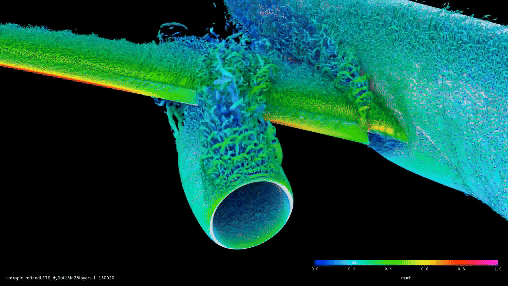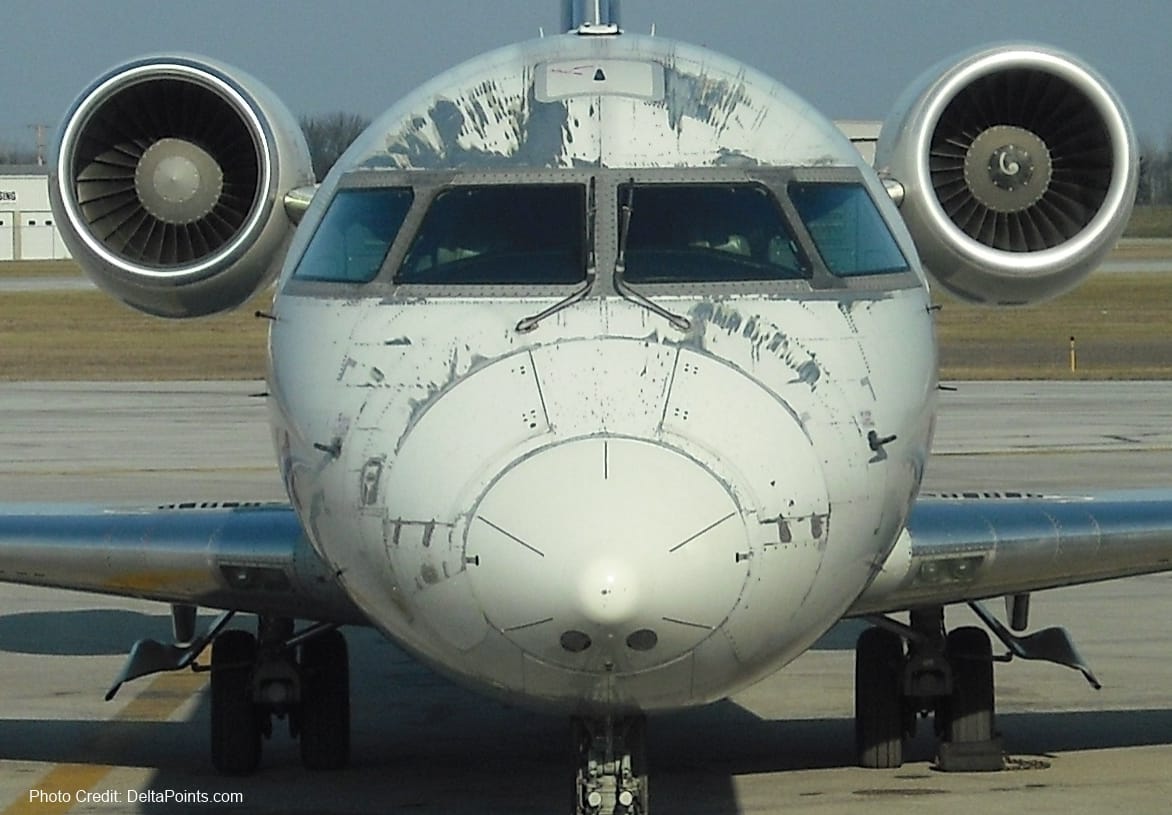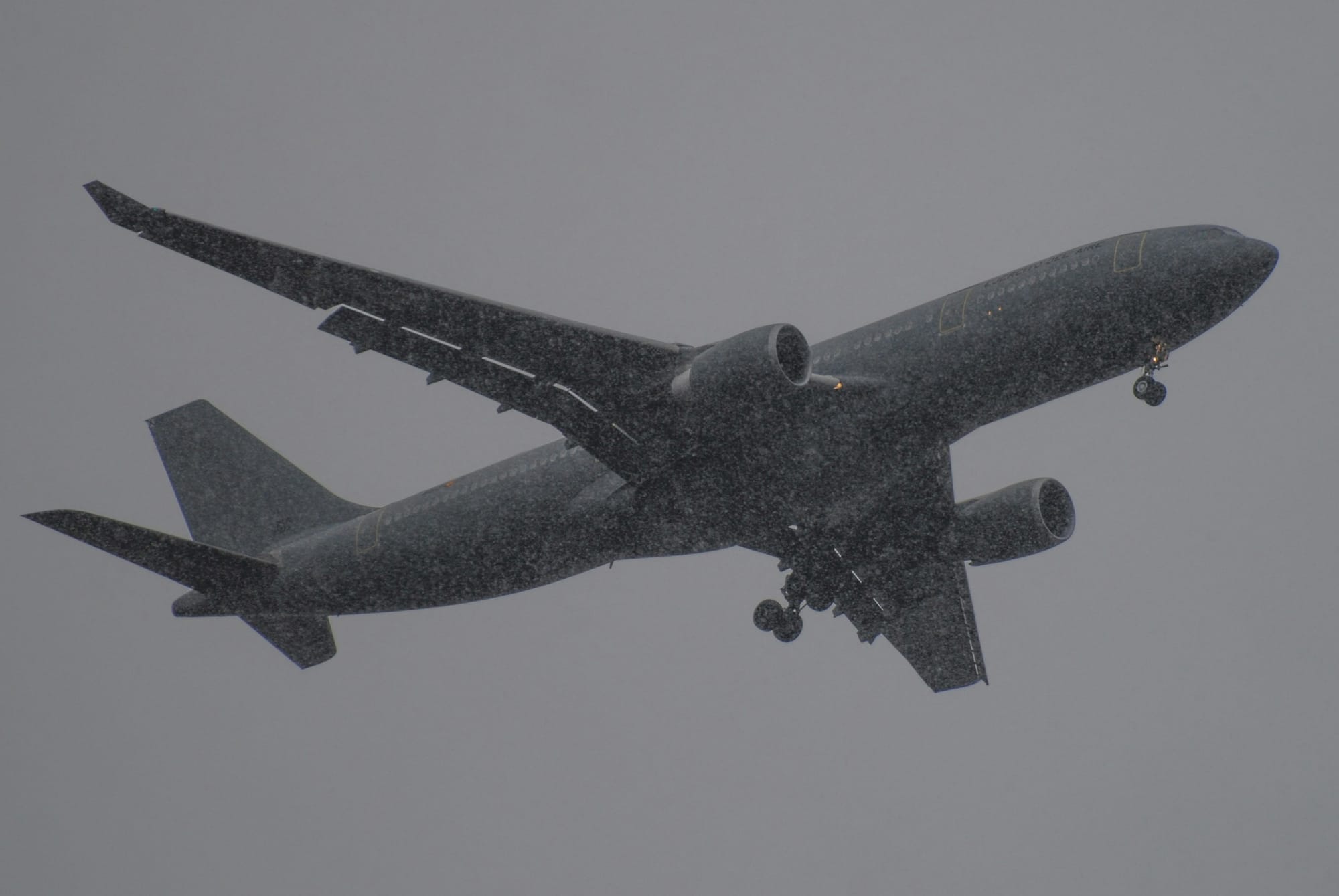WOW: Check Out This NASA Simulation of Airflow Over a Wing

The NASA Research team has published a very cool simulation of air flowing around a high lift wing. For anyone it's a a great way to see how air moves over a wing as its flying through the air and visualizes just what a wing is doing.

In the video you can see that the slats are extended, it's the droop device on the front of the wing. And the flaps look presumably out, which is the extended bit on the back of the wing.
The wing is in a high lift configuration, meaning that the wing is producing more lift, however it's also causing a significant amount of turbulent drag over the wing. This means that the engines would be producing more power to maintain flight, however the airplane could fly at slower speeds, such as in a landing configuration.
The most interesting bits are the distrubed air coming over the top of the engine and the turbulent air being produced off the inner part of the slat where the wing meets the body of the airplane.
Science At Work

Modern airplane wings rely on laminar flow to smoothly control the flow of air over wings to create lift and reduce the amount of drag over the wing. You can see just how smoothly the air flows over the wing, even in a dirty configuration.
However once the air slides off the back of the wing it has no where to go and becomes turbulent and disipates off the back of the aircraft.
This is what aircraft makers and researchers want to solve. If you can smoothly dissipate the air off the back of a wing you can reduce the amount of drag and wake turbulence an aircraft creates.
Final Thoughts
Air is something we can't celarly see, and we rely on computer simulations and models to test things, such as that aerodynamics of a cow. The better our models can get, the better we can design wings to reduce drag and make aviation better.
I will leave you with another humorious video, someone spent time and effort to figure out the aerodynamic flow of a cow. And let me tell you, they're not very aerodynamic.





